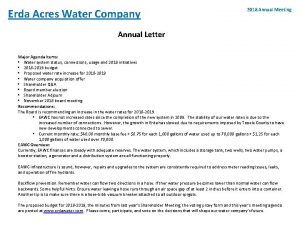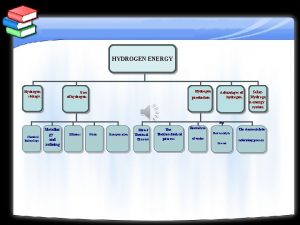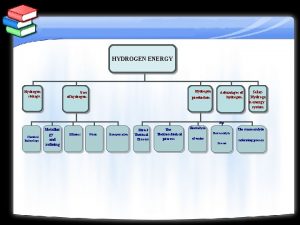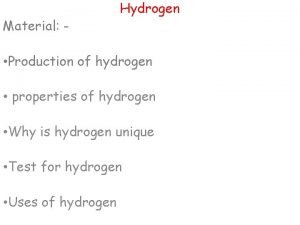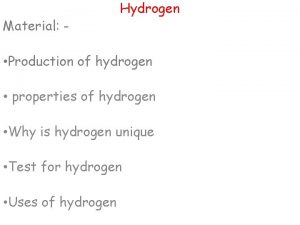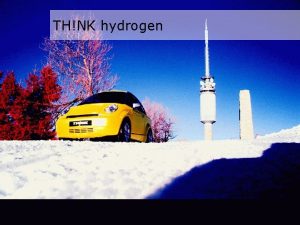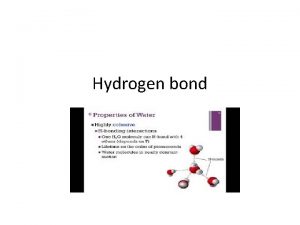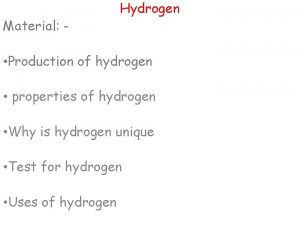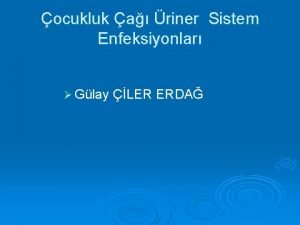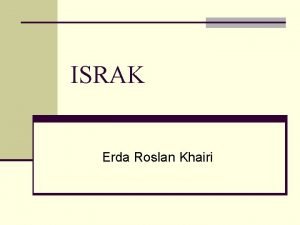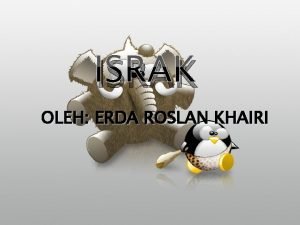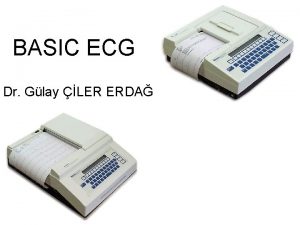ERDA for measurement of hydrogen in PV applications















- Slides: 15

ERDA, for measurement of hydrogen in PV applications -- DERF 06/08 -Presented by: Andrew Thomson Supervisor: Dr Keith Mc. Intosh

Introduction § Specialised form of ion beam analysis. § Understand the role of H in passivation. § Measuring SC dielectric coatings and silicon—dielectric interfaces, after various treatments. § Overview:

Really what is ERD – fancy RBS § Measurement of backscattered particle energy. § Gives energy count and yield. § Knowing “R crosssections” give quantative measurement.

Generalised ERD setup § Forward scatter measured. § Incident ion suppressed. § Experimental crosssections. § RBS and ERD combined. § Generally energy only is measured.

Resolution limits § Detection limits: • For an optimised sample 20 ppm, up to 1000 nm depth. § Comparative techniques: • SIMS, similar resolution, better depth resolution. • FTIR, measures bonds, unsure of resolution.

The physics of ERD – descriptively § Single atomic layer § Multiple layers add spread • Increased variance. • Straggle lowers energy. • Measured spectrum convolution of input spectrum with straggling function.

The physics of ERD – descriptively § Example of an ideal RBS spectrum: • Generalised two part dielectric on a substrate. § Example of an actual silicon substrate.

Setup at ANSTO – Lucas Heights

Setup at ANSTO – Lucas Heights § 3 Me. V tandem accelerator with a He ion source § So far we have used an incident power of 1. 8 Me. V. § Mylar foil § RBS: • Θ = 170 °, β = 60 °, α = 70 °. § ERD: • Θ = 30 °, β = 80 °, α = 70 °.

RBS and ERD measurements § RB Spectra of a Ti. O 2 dielectric layer on. § ERD specra § Shows surface absorption of H

Modelling Spectrums § Guess work: • • Layers. Energy per channel. Incident flux. Substrate. § Experience needed:

Modelling Spectrums – RBS Ti. O 2

Modelling Spectrums – ERD Ti. O 2

PECVD vs. Ti. O 2 § PECVD § Optimised Ti. O 2

Plans for PV applications of ERDA § Hydrogen characterisation: • • Basic PV processing steps. PV dielectrics. Hydrogenated Ti. O 2 Degradation processes. § Other applications: • Boron, and phos profiles. • Densification of Ti. O 2.
 Erda acres water
Erda acres water Varians formel
Varians formel Datorkunskap för nybörjare
Datorkunskap för nybörjare Tack för att ni har lyssnat
Tack för att ni har lyssnat Vad står k.r.å.k.a.n för
Vad står k.r.å.k.a.n för Läkarutlåtande för livränta
Läkarutlåtande för livränta Treserva lathund
Treserva lathund Tack för att ni lyssnade
Tack för att ni lyssnade Påbyggnader för flakfordon
Påbyggnader för flakfordon Egg för emanuel
Egg för emanuel Tobinskatten för och nackdelar
Tobinskatten för och nackdelar Atmosfr
Atmosfr Vad är vanlig celldelning
Vad är vanlig celldelning Byggprocessen steg för steg
Byggprocessen steg för steg Personlig tidbok
Personlig tidbok Rutin för avvikelsehantering
Rutin för avvikelsehantering
